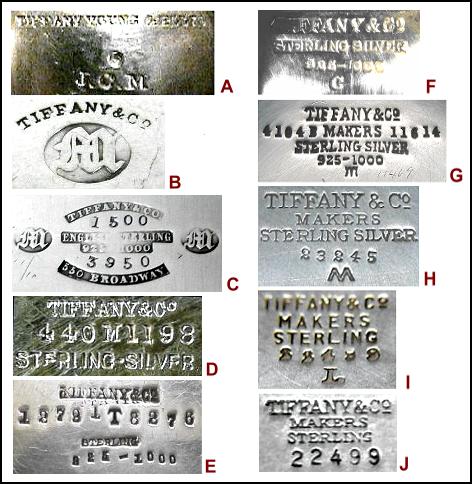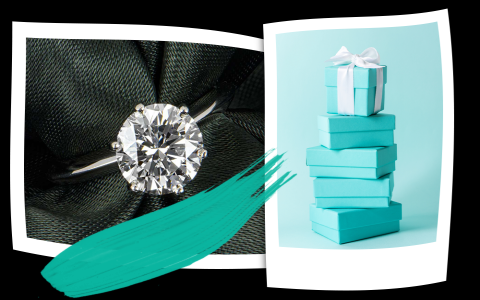Alright, folks, let’s jump into what I actually did today. Woke up thinking about this weirdly specific rabbit hole I fell down recently: Tiffany & Co. markings. Been seeing so many “vintage Tiffany” pieces online and at flea markets lately, prices all over the place. Figured I needed to know, for real, how to spot the legit stuff myself, not just read some list. So, mission accepted.

Getting My Hands Dirty
First step? I hauled out every piece of Tiffany jewelry my wife owns – mostly gifts from over the years, couple of bracelets, a necklace, her engagement ring. Good place to start, right? Figured authentic examples were crucial. Grabbed my trusty jeweler’s loupe – the cheap one I bought online ages ago, nothing fancy – and my phone flashlight.
Started simple. Looking for that tiny “TIFFANY & CO.” stamped somewhere. On the ring band? Yep, there it is, clear as day. Tiny, but legible under the loupe. Felt good, like finding Waldo. But then, on an older silver bracelet? Took me ages squinting. Found it finally on the inside of the clasp, super faint. Lesson learned immediately: it’s not always obvious. You gotta really hunt sometimes, especially on worn pieces. Didn’t realize before how easy it is to miss if you’re not looking super close.
The Numbers Game – 925 vs The Rest
Okay, next thing I wanted to get straight: the metal purity marks. Everyone knows “925” means sterling silver. Easy? Well… on my wife’s silver pieces, sure, “925” was clearly stamped. Often alongside “TIFFANY & CO.” itself, or nearby. But here’s where I started doubting online advice: just seeing “925” doesn’t mean squat for proving it’s Tiffany. That just tells you it’s sterling, which tons of non-Tiffany stuff is.
So I started comparing. Looked specifically for where the “925” stamp was relative to the “TIFFANY & CO.” stamp. Were they together? Separate? Same font? Got weirdly obsessed about font size for ten minutes. Realized some genuine pieces had them right next to each other, others had them a bit apart, but always both present. Key takeaway: “925” is necessary for silver, but it’s the Tiffany branding next to it (or sometimes intertwined) that’s the real marker.
Looking at the Fake Stuff (Yeah, I Bought One)
This is where it gets embarrassing but important. Had to see the difference first-hand, right? So I deliberately went online – not Tiffany’s real site! – and found one of those suspiciously cheap “vintage Tiffany charm bracelets.” Spent like $25. When it arrived, yep, total dud. But useful!

Slapped it under the loupe. First red flag: the marking said “Tiffany & Co.” but the ampersand (&) looked weird, kind of squished. The lettering overall was shallow. Then, the sterling mark? Just “925.” By itself. Separated way off to the side. No “TIFFANY” near it. The metal looked dull, felt lighter. Under the magnifier, the engraving looked messy, not crisp. It screamed mass-produced knockoff. Holding the fake right next to the real bracelet was eye-opening. The weight, the feel, the sharpness of the real stamping? Night and day. Didn’t fully appreciate that subtlety just from reading.
My Big Realization & Why Context Matters
After spending the whole afternoon with a sore neck from hunching over, here’s what hit me hardest: looking at markings alone is risky business. That fake had a marking, even used the “& Co.” part! But without comparing weight, feel, craftsmanship, and especially how that marking looks up close to a known real one? Easy to get fooled.
I also finally understood why people obsess over things like the copyright symbol (©) with dates on newer pieces – helps pinpoint an era. Didn’t find any on my wife’s stuff as they were older, but it clicked why collectors care.
So yeah, my deep dive basically taught me this: Knowing what markings to look for is step one. But actually knowing how they look, feel, and fit with the whole piece? That’s the real muscle you gotta build. It ain’t foolproof, but handling the real and the fake back-to-back? That’s the golden ticket, way more than memorizing lists. Now I feel way less nervous eyeballing pieces at the antique mall next weekend. Sorta.

